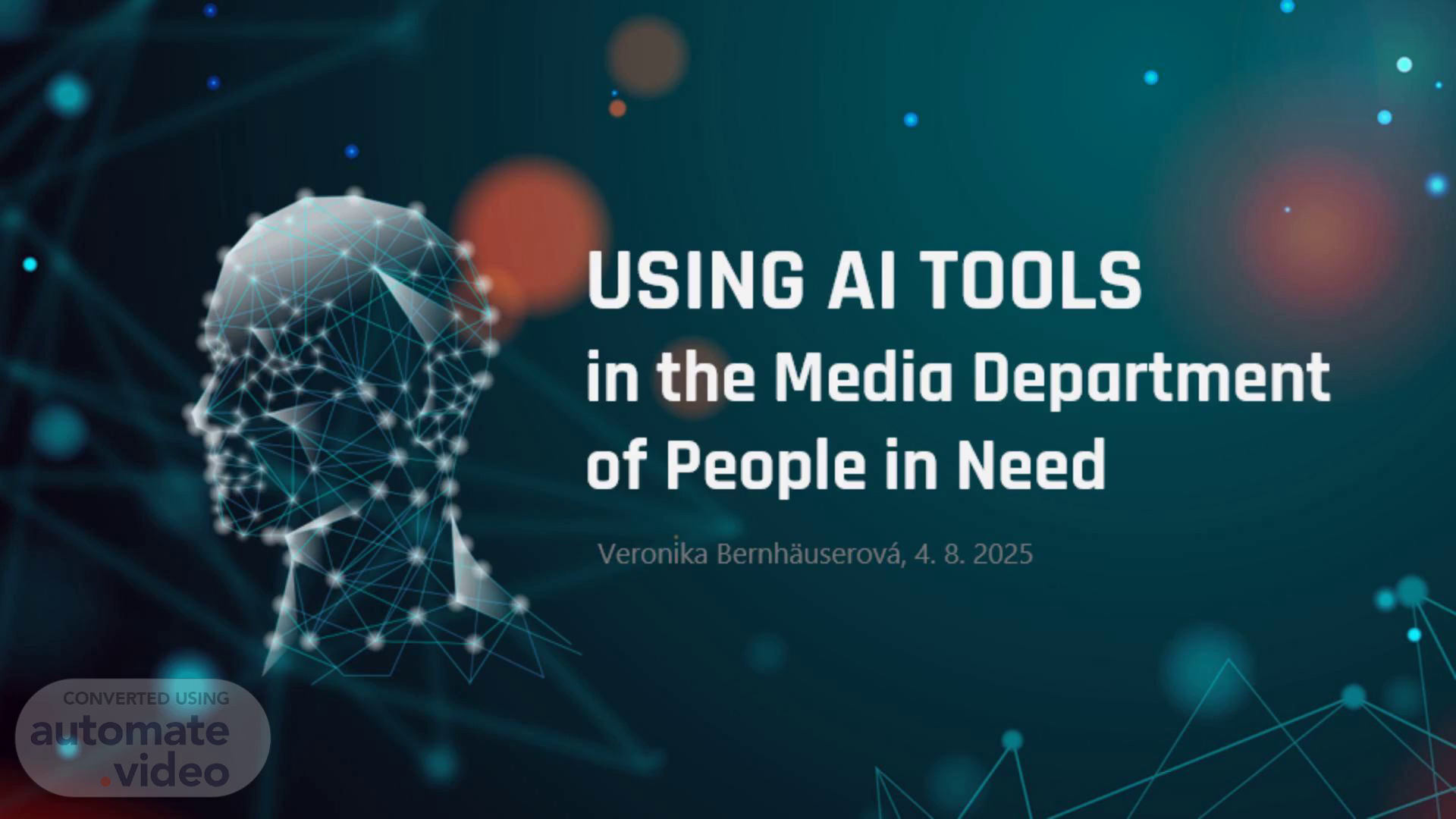
USING AI TOOLS in the Media Department of People in Need
Scene 1 (0s)
[Audio] Hello, I'm an AI voice assistant, and I'm here to present a short overview of how artificial intelligence can support the media department of People in Need. This presentation was created by Veronika Bernhäuserová, and I'll guide you through her ideas and examples..
Scene 2 (17s)
[Audio] In the next few minutes, we'll explore four key areas where AI tools can support media work – from writing and design to monitoring and multimedia editing. Each area offers practical ways to save time, improve quality, and boost creativity..
Scene 3 (33s)
[Audio] Let's imagine a typical situation. You've just received a short field update – five bullet points summarizing what happened. You need to turn it into a press release, and you only have two minutes..
Scene 4 (46s)
[Audio] With AI writing tools like ChatGPT, Copilot, Gemini or Perplexity, you paste the bullet points, choose the tone – informative, emotional, urgent – and the tool generates a full draft instantly. You can then rewrite it for different audiences, shorten it for social media, or translate it into another language. These tools also help with creative tasks – like brainstorming slogans, hashtags, or interview questions.
Scene 5 (1m 18s)
[Audio] Now let's move to design. Imagine you need to turn a Facebook post into an Instagram Story – quickly and professionally..
Scene 6 (1m 27s)
[Audio] With tools like Canva, Adobe Firefly or Leonardo AI, you can generate visuals from text prompts, resize them for different platforms, and keep everything aligned with your brand. Even without a graphic designer, you can create campaign visuals, posters, and social media content in minutes – ready to publish and share..
Scene 7 (1m 49s)
[Audio] Next, let's talk about media monitoring. Imagine this: you need alerts when your organization is mentioned in the news..
Scene 8 (1m 58s)
[Audio] Tools like Meltwater and Brandwatch track articles, blogs, and social media posts. They analyze sentiment – whether coverage is positive, neutral, or negative – and help you measure the impact of your campaigns. They also identify journalists and influencers who write about your topics, so you can build targeted media lists and respond strategically..
Scene 9 (2m 23s)
[Audio] Finally, let's look at multimedia. Imagine you need to remove a distracting object from a photo – or add subtitles to a field interview..
Scene 10 (2m 33s)
[Audio] With Cleanup.pictures, you can clean up images in seconds. Whisper AI transcribes audio recordings, even with accents or background noise. Descript lets you edit video by editing the transcript – perfect for interviews or podcasts. And DeepL helps you translate with nuance and accuracy. These tools make multimedia editing fast and accessible – even in field conditions..
Scene 11 (2m 59s)
[Audio] So what does AI bring to our media work? It saves time – press releases, visuals, subtitles, all faster It improves quality – consistent tone, branding, and translations It boosts creativity – campaign ideas, slogans, and visuals It strengthens media relationships – through better monitoring and response AI is not a replacement. It's a partner – helping us tell better stories, more efficiently..
Scene 12 (3m 29s)
[Audio] Here's a list of all the tools mentioned, with links and pricing. Most offer free versions, so you can start experimenting today. Let's not fear AI – let's use it to amplify the voices of those we serve..
Scene 13 (4m 20s)
[Audio] Thank you for your attention. This presentation was narrated using the AI tool automate.video – a small but powerful example of how artificial intelligence can support our work. Isn't this, in itself, a proof that AI can be a helpful and reliable partner?.